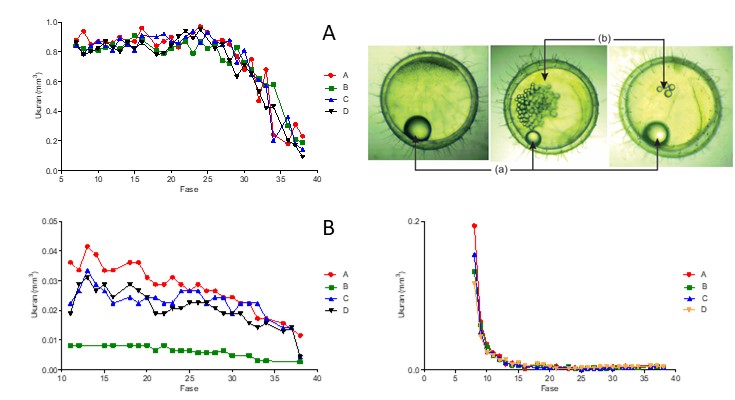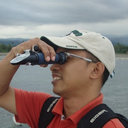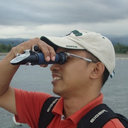Akuatikisle: Jurnal Akuakultur, Pesisir dan Pulau-Pulau Kecil
Full Length Article
Nutrient Absorption Rate of Oryzias celebensis Embryo
Highlights
Generate NLP AI by Wizdam ID.
Abstract
Oryzias celebensis is a species of medaka fish in South Sulawesi. During incubation, the growth and development of these fish embryos depend on the nutrients stored in the eggs. Therefore, this study aimed to determine the volume size of egg yolks and oil droplets and the absorption rate of egg yolks of O. celebensis embryos that reared in different incubation media. The study was conducted using a completely randomized design (CRD) with four rearing media treatments, namely A (Early Rearing Media), B (bottled water), C (Pattunuang river water) and D (well water) with five replications . The results showed that the volume of egg yolk and O. celebensis embryo oil in each medium showed a decrease in volume size along with the embryonic development stage. The absorption rate of yolk in O. celebensis embryos in media A had the biggest yolk absorption with an average 0.015±0.038 mm3 while media D had the smallest yolk absorption with an average 0.011±0.022 mm3.
Keywords
Introduction
Section snippets
Material and Methods
Materials and methods from the full-text PDF of this article cannot be displayed.
Results
Results from the full-text PDF of this article cannot be displayed.
Discussion
Discussion from the full-text PDF of this article cannot be displayed.
Conclusions
Conclusions from the full-text PDF of this article cannot be displayed.
Acknowledgment
Acknowledgment from the full-text PDF of this article cannot be displayed.
Funding Information
Kemendikbudristek (Nomor Kontrak 752/UN4.22./PT.02.00/2021)
Competing interest
The authors declare that they have no known competing financial interests or personal relationships that could have appeared to influence the work reported in this paper.
Conflict of interest
The authors declare that the research was conducted in the absence of any commercial or financial relationships that could be construed as a potential conflict of interest.
Ethical approval acknowledgements
No ethical approval required for this article. All procedures followed were in accordance with the ethical standards of the responsible committee on human experimentation (institutional and national) and with the Helsinki Declaration of 1975, as revised in 2008 (5)
Supplementary files
Data sharing not applicable to this article as no datasets were generated or analysed during the current study, and/or contains supplementary material, which is available to authorized users.
References (1)
Ariska, R.; Irawan, H. & Yulianto, T., 2018. Pengaruh perbedaan suhu terhadap laju penyerapan kuning telur larva ikan bawal bintang (Trachinotus blochii). Intek Akuakultur, 2(2): 13–24.
Bik, E.; Ishigaki, M.; Blat, A.; Jasztal, A.; Ozaki, Y.; Malek, K. & Baranska, M., 2020. Lipid droplet composition varies based on Medaka fish egg development as revealed by NIR-. MIR-, and Raman Imaging. Molecules, 25(817): 1–15.
Cho, J. G.; Kim, K. T.; Ryu, T. K.; Lee, J. W.; Kim, J. E.; Kim, J.; Lee, B. C.; Jo, E. H.; Yoon, J.; Eom, I. C.; Choi, K. & Kim, P., 2013. Stepwise embryonic toxicity of silver nanoparticles on Oryzias latipes. BioMed Research International, 2013: 1–7, DOI: 10.1155/2013/494671.
Dharma, T. S., 2015. Perkembangan embrio dan penyerapan nutrisi endogen pada larva dari pemijahan secara alami induk hasil budidaya ikan bawal laut, Trachinotus blocii, Lac. Jurnal Ilmu dan Teknologi Kelautan Tropis, 7(1): 83–90.
Fraher, D.; Sanigorski, A.; Mellett, N. A.; Meikle, P. J.; Sinclair, A. J. & Gibert, Y., 2016. Zebrafish Embryonic Lipidomic Analysis Reveals that the Yolk Cell Is Metabolically Active in Processing Lipid. Cell Reports, 14(6): 1317–1329, DOI: 10.1016/j.celrep.2016.01.016, Available: <http://dx.doi.org/10.1016/j.celrep.2016.01.016>.
González-Doncel, M.; Okihiro, M. S.; Villalobos, S. A.; Hinton, D. E. & Tarazona, J. V., 2005. A quick reference guide to the normal development of Oryzias latipes (Teleostei, Adrianichthyidae). Journal of Applied Ichthyology, 21(1): 39–52, DOI: 10.1111/j.1439-0426.2004.00615.x.
Halbach, K.; Ulrich, N.; Goss, K. U.; Seiwert, B.; Wagner, S.; Scholz, S.; Luckenbach, T.; Bauer, C.; Schweiger, N. & Reemtsma, T., 2020. Yolk sac of zebrafish embryos as backpack for chemicals? Environmental Science and Technology, 54(16): 10159–10169, DOI: 10.1021/acs.est.0c02068.
Heming, T. A. & Buddington, R. K., 1988. 6 Yolk absorption in embryonic and larval fishes. Fish Physiology, 11(PA): 407–446, DOI: 10.1016/S1546-5098(08)60203-4.
Huynh, T. B.; Fairgrieve, W. T.; Hayman, E. S.; Lee, J. S. F. & Luckenbach, J. A., 2019. Inhibition of ovarian development and instances of sex reversal in genotypic female sablefish (Anoplopoma fimbria) exposed to elevated water temperature. General and Comparative Endocrinology, 279: 88–98, DOI: 10.1016/j.ygcen.2018.12.013, Available: <https://doi.org/10.1016/j.ygcen.2018.12.013>.
Ishigaki, M.; Kawasaki, S.; Ishikawa, D. & Ozaki, Y., 2016. Near-Infrared Spectroscopy and Imaging Studies of Fertilized Fish Eggs: In Vivo Monitoring of Egg Growth at the Molecular Level. Scientific Reports, 6(December 2015): 1–10, DOI: 10.1038/srep20066.
Iwamatsu, T., 2004. Stages of normal development in the medaka Oryzias latipes. Mechanisms of development, 121: 605–618, DOI: 10.1016/j.mod.2004.03.012.
Iwamatsu, T., & Hirata, K. 1984. Normal course of development of the Java medaka, Oryzias javanicus. 愛知教育大学研究報告 自然科学, (33), 87-109.
Iwamatsu, T.; Muramatsu, T. & Kobayashi, H., 2008. Oil droplets and yolk spheres during development of Medaka embryos. Ichthyological Research, 55(4): 344–348, DOI: 10.1007/s10228-008-0048-z.
Jardine, D. & Litvak, M. K., 2003. Direct yolk sac volume manipulation of zebrafish embryos and the relationship between offspring size and yolk sac volume. Journal of Fish Biology, 63: 388–397, DOI: 10.1046/j.1095-8649.2003.00161.x.
Kamler, E., 2008. Resource allocation in yolk-feeding fish. Reviews in Fish Biology and Fisheries, 18(2): 143–200, DOI: 10.1007/s11160-007-9070-x.
Kinoshita, M.; Murata, K.; Naruse, K. & Tanaka, M., 2009. Medaka: Biology, Management, and Experimental Protocols. USA: Wiley-Blackwell, ISBN: 9780813808710.
Liu, K.; Song, J.; Chi, W.; Liu, H.; Ge, S. & Yu, D., 2021. Developmental toxicity in marine medaka (Oryzias melastigma) embryos and larvae exposed to nickel. Comparative Biochemistry and Physiology Part - C: Toxicology and Pharmacology, 248(7): 109082, DOI: 10.1016/j.cbpc.2021.109082, Available: <https://doi.org/10.1016/j.cbpc.2021.109082>.
Manantung, V. O.; Sinjal, H. J. & Monijung, R. D., 2013. Evaluasi Kualitas, Kuantitas Telur Dan Larva Ikan Patin Siam (Pangasianodon Hiphopthalmus) Dengan Penambahan Ovaprim Dosis Berbeda. e-Journal BUDIDAYA PERAIRAN, 1(3): 14–23, DOI: 10.35800/bdp.1.3.2013.2718.
Norrgren, L., 2012. Fish models for ecotoxicology. Acta Veterinaria Scandinavica, 54(S1): 1–2, DOI: 10.1186/1751-0147-54-s1-s14.
Oxendine, S. L.; Cowden, J.; Hinton, D. E. & Padilla, S., 2006. Adapting the medaka embryo assay to a high-throughput approach for developmental toxicity testing. NeuroToxicology, 27(5): 840–845, DOI: 10.1016/j.neuro.2006.02.009.
Parenti, L. R., 2008. A phylogenetic analysis and taxonomic revision of ricefishes, Oryzias and relatives (Beloniformes, Adrianichthyidae). Zoological Journal of the Linnean Society, 154(3): 494–610, DOI: 10.1111/j.1096-3642.2008.00417.x.
Puangchit, P.; Ishigaki, M.; Yasui, Y.; Kajita, M.; Ritthiruangdej, P. & Ozaki, Y., 2017. Non-staining visualization of embryogenesis and energy metabolism in medaka fish eggs using near-infrared spectroscopy and imaging. Analyst, 142(24): 4765–4772, DOI: 10.1039/c7an01575e, Available: <http://dx.doi.org/10.1039/c7an01575e>.
Riddle, M. R. & Hu, C. K., 2021. Fish models for investigating nutritional regulation of embryonic development. Developmental Biology, 476(November 2020): 101–111, DOI: 10.1016/j.ydbio.2021.03.012.
Sant, K. E. & Timme-Laragy, A. R., 2018. Zebrafish as a Model for Toxicological Perturbation of Yolk and Nutrition in the Early Embryo. Current environmental health reports, 5(1): 125–133, DOI: 10.1007/s40572-018-0183-2.
Sari, D. K.; Andriani, I.; Yaqin, K. & Satya, A. M., 2018. The Use of Endemic Sulawesi Medaka Fish (Oryzias celebensis) as an animal model candidate. In: Proceedings of the 20th FAVA Congress & The 15th KIVNAS PDHI, Makassar, pp. 564–565.
Setiamarga, D. H. E.; Miya, M.; Yamanoue, Y.; Azuma, Y.; Inoue, J. G.; Ishiguro, N. B.; Mabuchi, K. & Nishida, M., 2014. Divergence time of the two regional medaka populations in Japan as a new time scale for comparative genomics of vertebrates. Biology Letters, 5(6): 812–816, DOI: 10.1098/rsbl.2009.0419.
Song, J.; Wu, H.; Liu, K.; Chi, W.; Ge, S.; Zhang, Z.; Wang, M.; Yu, Y. & Yu, D., 2021. Observation and analysis of morphology abnormalities in development of Oryzias melastigma embryos. Journal of Oceanology and Limnology, 39(4): 1485–1499, DOI: 10.1007/s00343-020-0227-y.
Termvidchakorn, A. & Magtoon, W., 2008. Development and identification of the ricefish Oryzias in Thailand. ScienceAsia, 34(4): 416–423, DOI: 10.2306/scienceasia1513-1874.2008.34.416.
Vignet, C.; Cappello, T.; Fu, Q.; Lajoie, K.; De Marco, G.; Clérandeau, C.; Mottaz, H.; Maisano, M.; Hollender, J.; Schirmer, K. & Cachot, J., 2019. Imidacloprid induces adverse effects on fish early life stages that are more severe in Japanese medaka (Oryzias latipes) than in zebrafish (Danio rerio). Chemosphere, 225: 470–478, DOI: 10.1016/j.chemosphere.2019.03.002.
Bibliographic Information
Cite this article as:
-
Submitted
20 October 2021 -
Accepted
15 November 2021 -
Published
17 November 2021 -
Version of record
26 February 2022 -
Issue date
30 November 2021
-
Academic subject
Fisheries Science
Copyright
Sangia Advertisement
The Indonesian Archipelago has enormous potential for marine resources. Marine biological resources are scattered in almost all areas from the coast to the deep sea. Various biological resources of mangroves, fish, shellfish, crustaceans, corals, and much more. Behind that, there are the challenges of resource management and economic growth.
Copyright © 2021 Lalombo, Y.I., Yaqin, K., & Omar, S.B.. Sangia Research Media and Publishing. Production and hosting by Sangia (SRM™).  This work is licensed under a Creative Commons Attribution-ShareAlike 4.0 International License.
This work is licensed under a Creative Commons Attribution-ShareAlike 4.0 International License.
Disclaimer: All claims expressed in this article are solely those of the authors and do not necessarily represent those of their affiliated organizations, or those of the publisher, the editors and the reviewers. Any product that may be evaluated in this article or claim that may be made by its manufacturer is not guaranteed or endorsed by the publisher.
Comments on this article
By submitting a comment you agree to abide by our Terms and Community Guidelines. If you find something abusive or that does not comply with our terms or guidelines please flag it as inappropriate.









